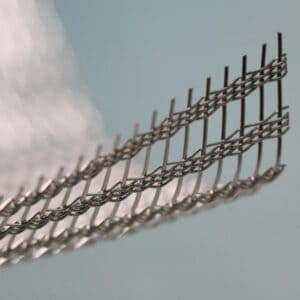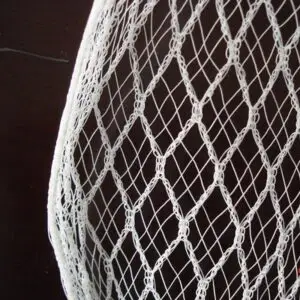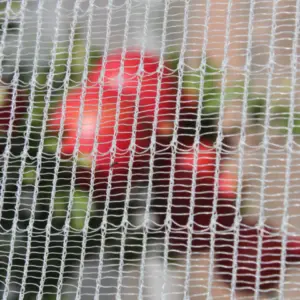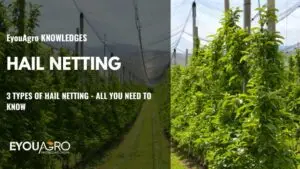Introduction
Solar panels are a powerful and effective way to lower energy costs and help the environment, but they need protection.
Severe weather, especially hail, can damage solar panels and decrease their efficiency. Hail protection, especially using hail netting, is important for any solar panel owner, but it’s especially critical for those who live in areas prone to bad weather events.
Taking steps to protect solar panels from hail damage can help you keep your investment in solar power safe for years.
By following these tips, you can be sure your solar panels will be protected from the worst Mother Nature offers.
Here are 7 tips to help you keep your solar panels safe from hail
Which situations require hail protection for solar panels?
Determine the Hail Possibility and Frequency in Your Area.
If you live in a hail-prone area, being prepared for possible hail damage is a must.
One of the best ways to do this is to research the hail frequency in your area. This will give you a good idea of how often you need to take steps to protect your solar panels and study how to protect solar panels from hail.
According to the National Severe Storms Laboratory (NSSL), more than 50,000 thunderstorms occur in the U.S. annually, and about 10% of those storms produce hail.

Most of the time, hail is small and causes little or no damage.
However, occasionally, hailstones can be large and cause significant damage to property, including solar panels.
In the United States, hailstorms are common in the Midwest, Great Plains, and Rocky Mountain states.
However, hailstorms can occur anywhere in the country.
Australia’s most frequent hail areas are in the southeastern and eastern states.
Hail Size Matters
The size of the hailstones, not the number, causes damage. For example, suppose your area experiences a hailstorm with golf ball-sized hailstones (1.75 inches in diameter). In that case, that storm is more likely to damage solar panels than a storm with pea-sized hailstones (0.25 inches in diameter).
NSSL researchers have found that most hailstorms produce small hailstones, less than 0.75 inches in diameter.
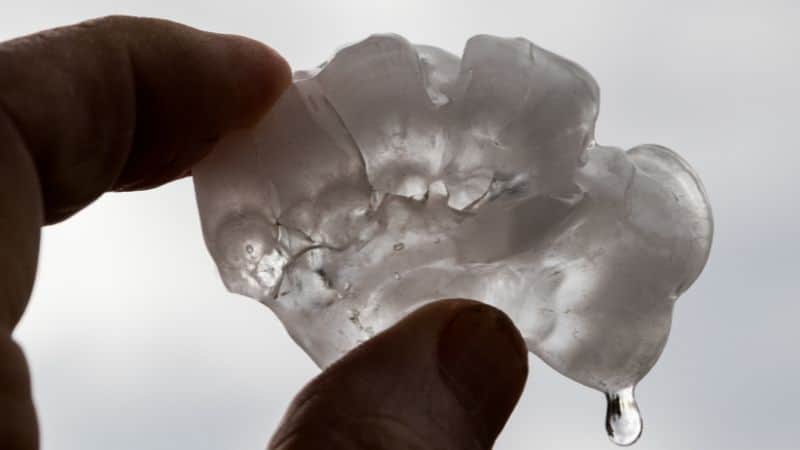
In fact, about 80% of all hailstones are smaller than this.
However, about 20% of all hail stones are larger than 0.75 inches in diameter. And a very small percentage of hailstones, less than 0.1%, is extremely large, with a diameter of 2 inches or more.
These large hailstones are most likely to damage solar panels severely and affect energy output.
7 Tips about How to protect solar panels from hail
There are a few ways to make your solar panels more resistant to hail storms.
Install hail-proof netting
The easiest and most effective way is to install a solar panel protective cover for the solar panels.
The netting is placed over the solar panels and helps to deflect hail storms.
Hail netting is the most effective protective cover compared to other hail protection methods, such as impact-resistant mounts.
Installing hail netting is like investing in insurance: It involves spending a small amount of money to avoid huge losses and is cost-effective.
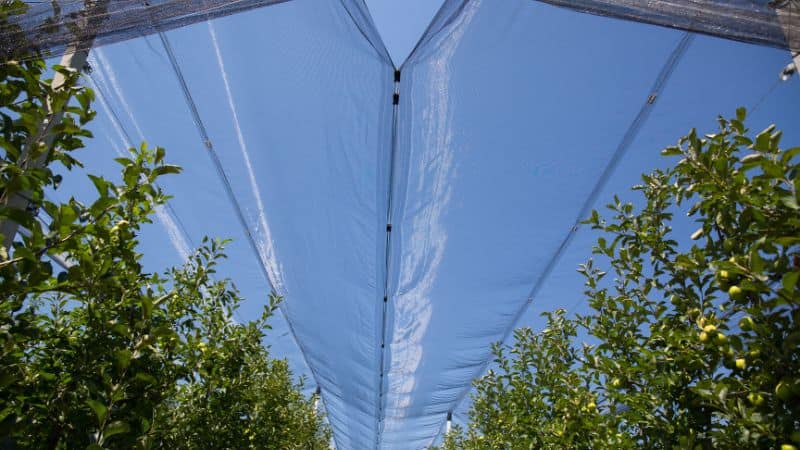
Choose the right high-quality solar panels
Choose the suitable material to make solar panels withstand hail.
Solar cells are the most crucial solar panel components.
When shopping for solar panels, choosing a durable material that can withstand severe weather conditions is essential.
Polycrystalline and monocrystalline silicon are the most durable solar cell materials available.
They are also less likely to be damaged.
Solar Panels
Choose the Right Location for Your Solar Panels
When you’re installing solar panels, consider hail frequency.
If you live in an area prone to hail, it’s best to avoid putting your solar panels in a spot directly in the path of severe storms.
Use tempered glass
Standard solar panels include solar cells and a glass casing in front of them, usually 6-7 mm thick and susceptible to hail damage.
When hailstones hit the glass surface, they can break it, reducing the solar panel’s power output. In some cases, hail can shatter the entire panel. Tempered glass is a type of glass that is designed to be more resistant to breakage.

If you have had repeated hailstorms near your PV farm site, using tempered glass for your solar panels can help protect them from damage to the solar system.
Use impact-resistant mounting and racks
Using impact-resistant mounts and racks can help protect solar panels from hail damage. These products are designed to absorb the impact of hailstones, which can help prevent breakage.
Select a strong tilt angle when installing solar panels
Choosing a tilt angle that will help protect your solar panels from damage is important. A steeper tilt angle will help deflect hail storms away from the solar panel.

Consider Wind and Hail Insurance
Consider solar panel insurance for the wind and hail in your area when shopping for solar panels. If you live in an area prone to severe storms, getting insurance to help protect your investment is a good idea.

When shopping for insurance, be sure to get a policy covering hail damage. Some policies only cover wind damage, so read the fine print.
Also, be sure to shop around and compare rates. Some insurers offer discounts for solar panel owners, so it’s worth checking with your insurance company to see if they offer any special rates.
How to Choose Hail Netting?
What is Hail Netting?
Hail netting is a type of hail protection placed over solar panels to help deflect hail storms. It is most effective when used in conjunction with other hail protection methods, such as impact-resistant mounts.
What’s the material of hail nets?
Hail nets are usually made of polyethylene monofilament. This material is solid and durable, and suitable for outdoor use. Even if it is exposed to wind and rain for a long time outdoors, the effect of use will not be affected.
What’s the best type of Hail Netting for a solar panel?
There are three main types of hail netting in the market: Raschel Drap Hail Netting, Raschel Quad Crossover Knitted Hail Netting, and Leno Hail Netting. They are different in their construction and characteristics due to the different equipment and methods used to weave them.
Leno Hail Netting is usually chosen for solar panel protection because its larger mesh provides less light blockage when protecting against hail and has a 93-95% sunlight transmission rate.
What’s the best color of Hail Netting used in solar panels?
Transparent is the most suitable color for anti-hail netting installed on solar panels, as it is the most favorable for light penetration. The transparent color protects the solar panels as much as possible while minimizing the impact on their efficiency. Therefore, most PV farms choose transparent hail netting to protect solar panels.
See more information about hail netting in the related post below:
Related Posts
FAQs protecting the solar panels from hail
Can solar panels withstand hail?
Solar panels are made of glass, which makes them vulnerable to hail damage. However, there are a few ways to make your solar panels more resistant to hail damage.

What happens if it hails on solar panels?
Hailstones can break the glass on solar panels, which reduces their power output. In some cases, hail can shatter the entire panel.
What to use to protect solar panels?
There are a few ways to make your solar panels more resistant to hail damage. You can choose the right solar panel material, use tempered glass, or install hail-proof netting.
Can Hail netting stop hail from damaging solar panels?
Yes, of course.
Hail netting is a type of netting designed to protect solar panels from hail damage. It is placed over the panels and helps to deflect hailstones.
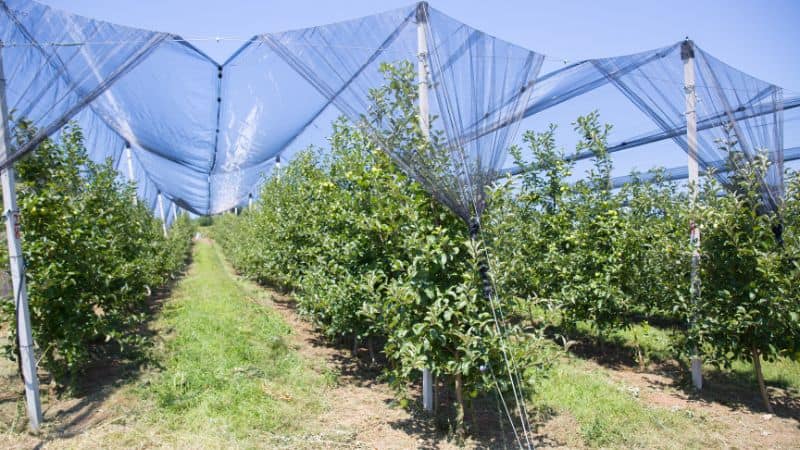
Conclusion
Solar panels are a significant investment, but they can be expensive to replace if they’re damaged by hail. Protecting your solar panels from hail damage includes choosing the right location, using tempered glass, and installing hail netting. You can also get insurance to help cover the replacement cost if your solar panels are damaged by hail. By taking these steps, you can help keep your solar panels in good condition for years.
If you’re looking for a way to protect your solar panels from hail damage, consider using hail netting.
Eyouagro is a company that specializes in hail netting and can help you find the right product for your needs. Contact us today to learn more about our products and how we can help you keep your solar panels in good condition.


